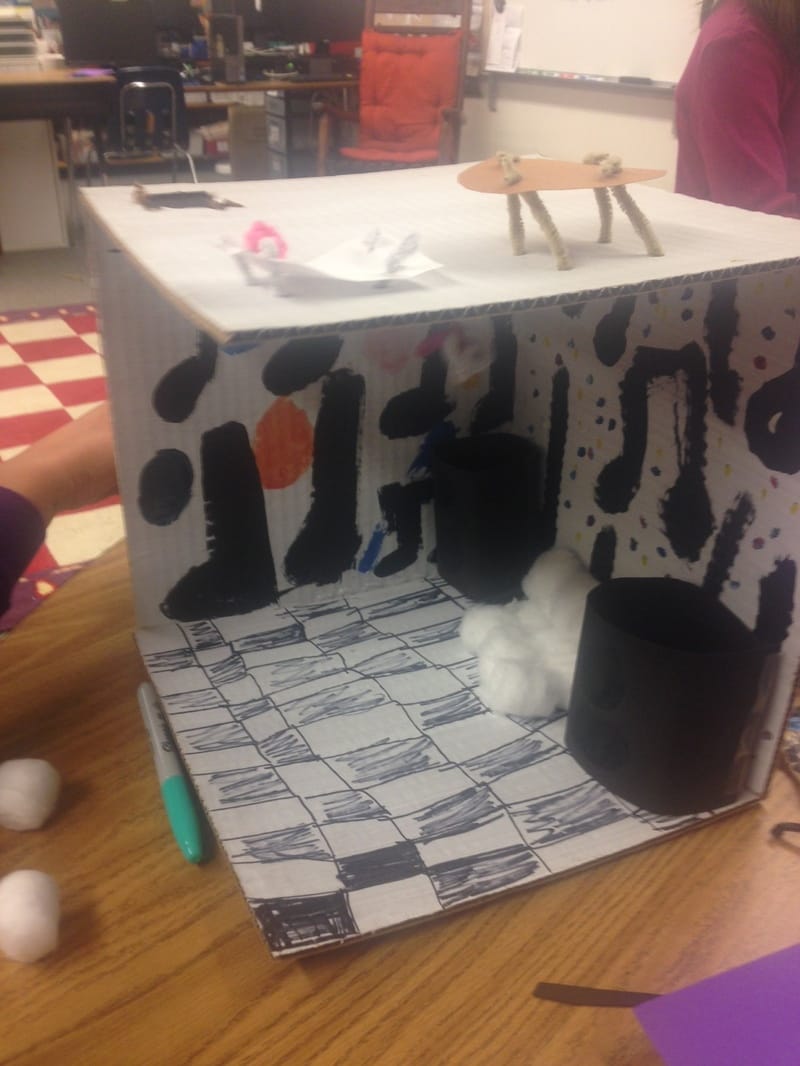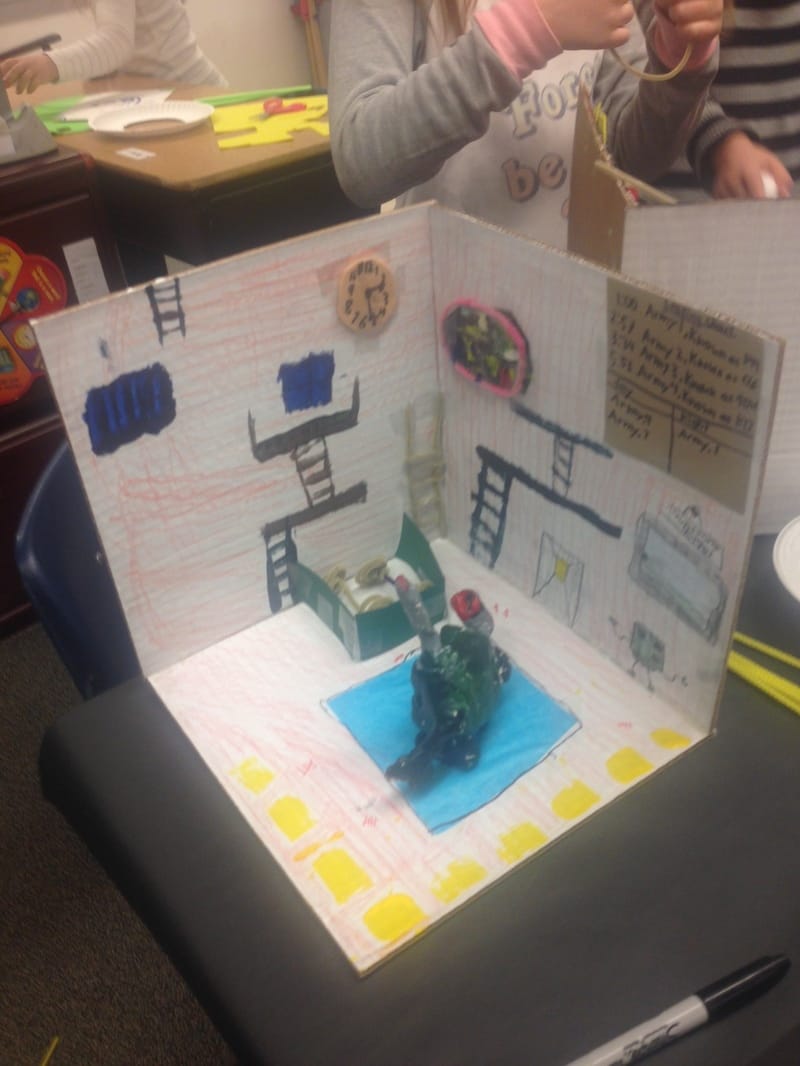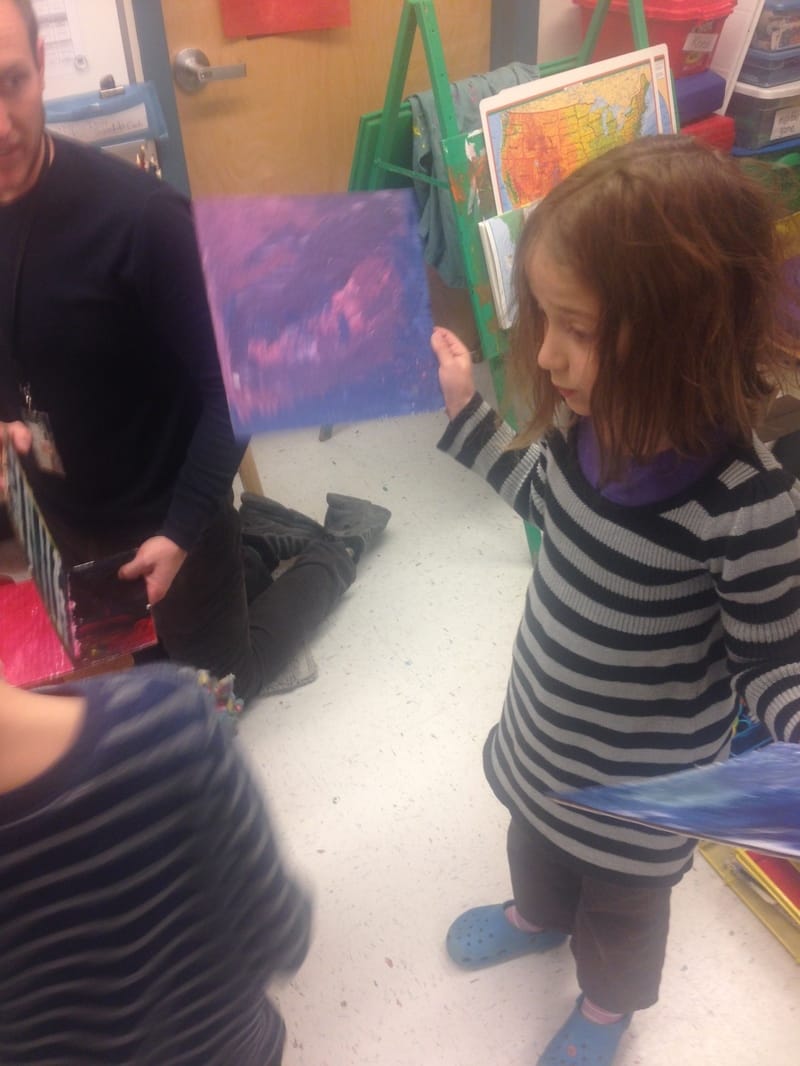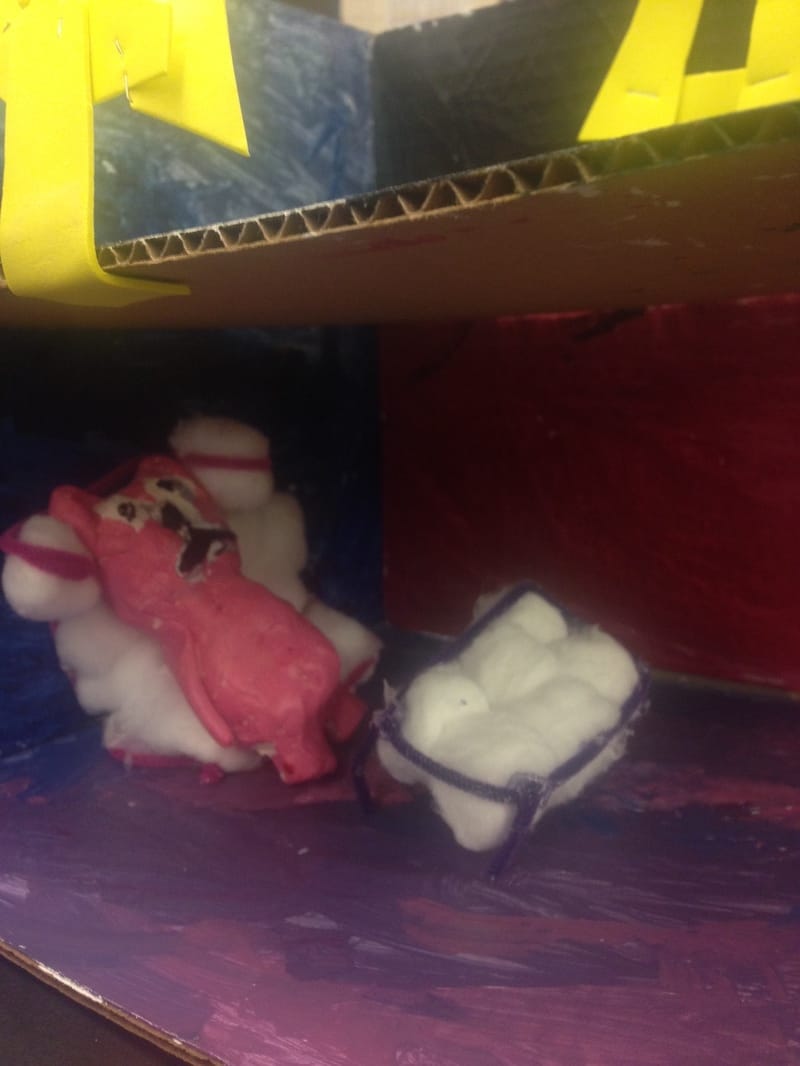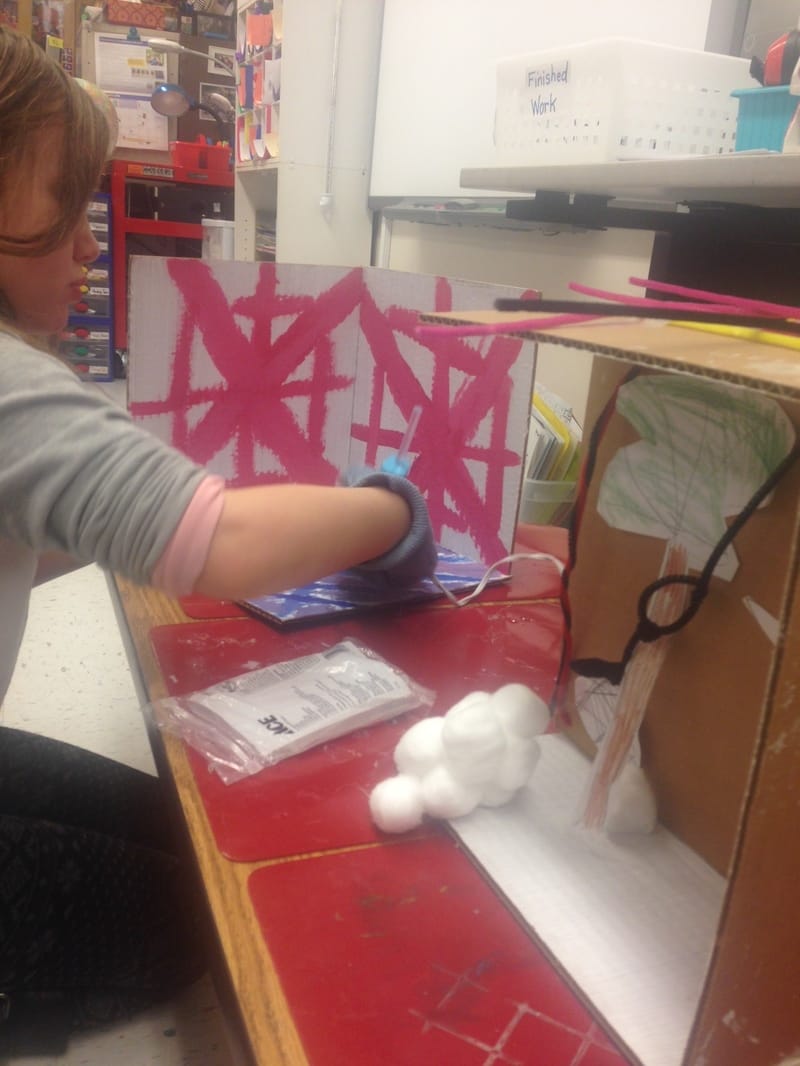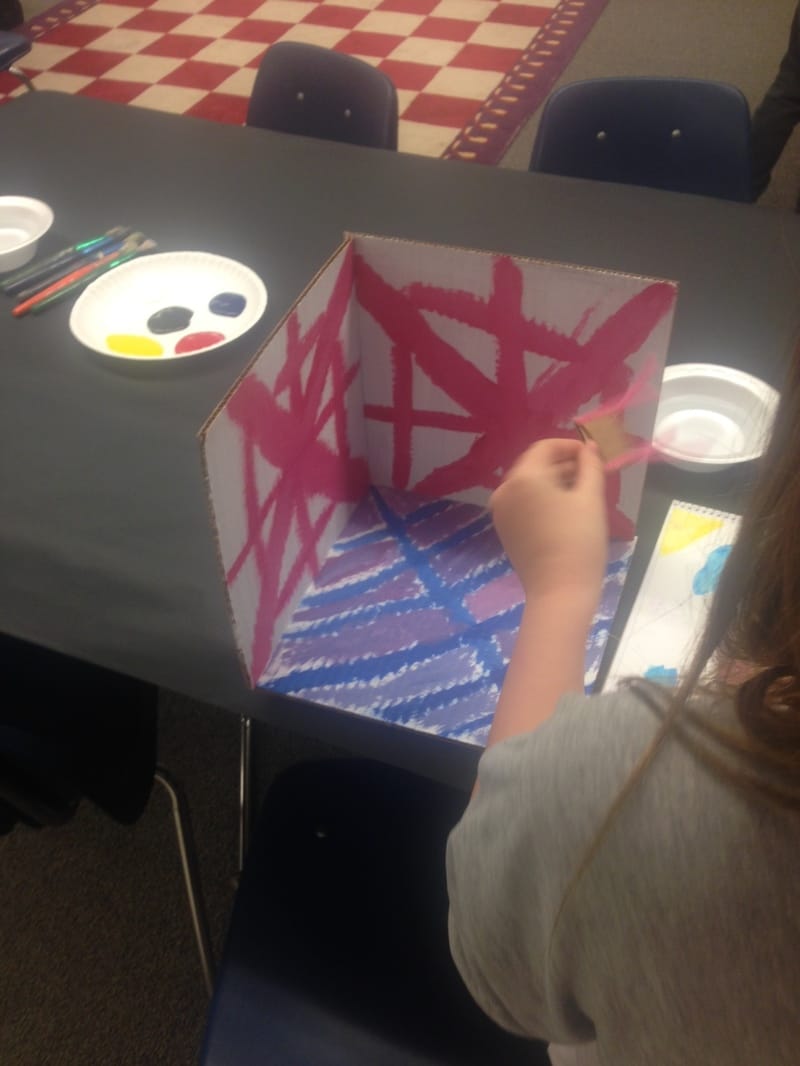HabitatFor this lesson, students will consider how a background, habitat, or environment help emphasize the characteristics of an object in a piece of work. While considering the anthropomorphic objects they created in the last lesson, students will create a personalized environment that will enhance the characteristics of their creature. This will help students demonstrate how added details and an environment can completely change our understanding of something. We will show a powerpoint that emphasizes the idea of changing environment as motivation. Students will then construct (either individually or collaboratively) a 3D environment to place their creature in. They will do this using gessoed cardboard constructed to be walls and a floor, and paint and mixed media to create the environment.
|
DocumentationTwo Finalized Habitats:
COLLABORATION |
Construction
